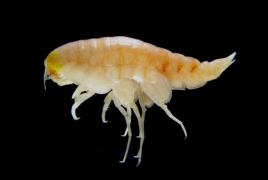
Banned chemicals are tainting tiny crustaceans that inhabit the deepest ocean, a study said Monday, February 13 -- the first evidence that humans are polluting even the farthest reaches of our planet, AFP reports.
Even at depths of nearly 11 kilometres (seven miles) these scavengers could not escape "extraordinary" levels of contamination with chemicals used in coolants and insulating fluids, researchers said.
The pollutants likely came from plastic waste and dead animals sinking to the ocean floor, they wrote in the journal Nature Ecology & Evolution.
"We still think of the deep ocean as being this remote and pristine realm, safe from human impact, but our research shows that, sadly, this could not be further from the truth," said study co-author Alan Jamieson of Newcastle University.
Jamieson and a team used specially-built underwater craft to collect bottom-dwellers called amphipods from the Pacific Ocean's Mariana and Kermadec trenches.
These are some of the deepest, darkest places on Earth, less well-known to mankind than the surface of the Moon.
Amphipods are among the few creatures that can survive in this inhospitable zone of extreme pressure.
The researchers used mackerel-baited traps to catch the shrimp-like carrion-feeders, then analysed them for traces of chemicals.
The tests revealed high levels of pollutants, including polychlorinated biphenyls (PCBs) banned almost 40 years ago for causing cancer and wreaking havoc with hormones.
"The fact that we found such extraordinary levels of these pollutants in one of the most remote and inaccessible habitats on Earth really brings home the long-term, devastating impact that mankind is having on the planet," said Jamieson.

